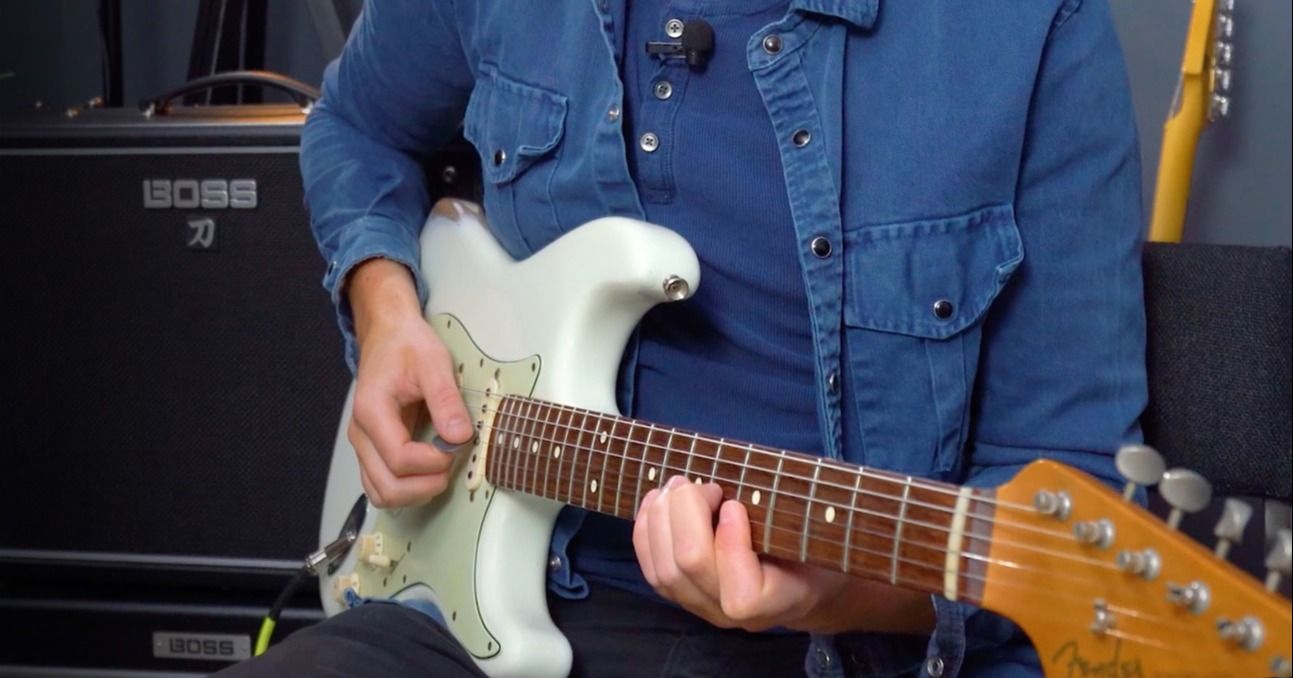Triads, Building Speed and Song 7
Course: 10 Day Lead Guitar Bootcamp

In this video
Welcome to day 7 of this free 10 day lead guitar challenge!
In this lesson, we'll learn about triads and how they apply to lead guitar parts. We'll then learn the lead part from the song 'Not Nineteen Forever' by The Courteeners.
Lead part
If we imagine an open A chord - the notes within this chord are A, E and C# but over 5 of our strings.
All a triad is, is the three notes that make up any major or minor chord. Once we apply these notes to the thinner strings, we create a triad shape (shown below). They really stand out over full chords that include the thicker strings, and take us into lead guitar territory.
This main lead part starts and is based around this A major triad (Shape 1 - shown below).
The A, E and C# notes are the same from the open A major chord (blue/green dots)
This particular triad is a section taken out of an A major barre chord.
Second finger, 6th fret of string 3
First finger barres both 5th fret notes, string 1 and 2.
Rhythmically, as featured briefly in Day 6, the strumming pattern for this guitar part can be looked at as:
8 strums all down-picked ('1-and-2-and-3-and-4 and')
As we start to increase the tempo of our strumming, we need to keep the gaps between each strum evenly spread out
Shape 1
For this next chord, Shape 2, we take off our second finger and move one fret up to 7th using our third finger instead
8 strums again in total all down-picked ('1-and-2-and-3-and-4 and')
Shape 2
The two chord diagrams below show the next two changes, which have quicker changes between them. The first diagram is shape 3 and goes back to shape 2.
Shape 3 strummed 3 times - 4th finger (little finger) is placed on the 7th fret 2nd string
Shape 2 strummed 5 times - The first finger continues to barre across string 1 and 2 with 3rd finger, 7th fret string 3
Having our first finger barred at all times allows us to press on and off quickly for quick and efficient changes between the two shapes
If we get tired fingers when barring or want a more open shape sound, we can add a capo at the 7th fret!
Shape 3
Shape 2
Triad Theory
The triad shapes are common in guitar playing but if we apply a small amount of theory behind them too, it can help us:
Learn the notes on the higher strings and higher frets
Learn the notes of chords and how to build chords
Complementing another guitar player's rhythm work in a band setting
Add nice melodic qualities to our lead guitar lines by Arpeggiating
Recap
Triads are three notes that make up any major or minor chord
Improving our right hand technique - playing 8 strums, increasing speed but keeping body relaxed
If you've successfully played along to today's song, move onto day 8 for some more lead guitar challenges!
Course Outline
10 Day Lead Guitar Bootcamp
